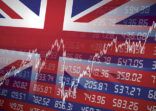If the strengthening US dollar has been a predictable consequence of rising interest rate differentials between the US and other markets, then the winners and losers have been far less predictable than previous market cycles would suggest.
The US Dollar Index, which measures the greenback against a basket of other currencies, is up almost 16% year to date, its strongest showing in two decades, buttressed by a range of factors including both macroeconomic and geopolitical.
The most obvious reason has been the Federal Reserve hiking interest rates, although the flight to quality in the wake of market volatility and the impact of the Russia-Ukraine war on the growth outlook in Europe have also played a role.
Traditionally, Fed tightening cycles have tended to be particularly negative for Asia as emerging markets suffer as a result of holding high levels of US dollar-denominated debt and operating fixed exchange rates.
There have been pockets of trouble this time around, for example in Sri Lanka and Pakistan, although generally major currencies such as the Japanese yen, Swiss franc, euro and sterling have fared worse compared with a basket of Asian currencies.
“A lot of what we’re going through right now, it’s not about weaker currencies in Asia; it’s about a stronger dollar and, if anything, if we look at the dollar from a G3/G7 perspective, Asia has actually done much better,” said the head of Asia ex-Japan fixed income at one US-headquartered asset manager.
“You have the Chinese yuan, which has depreciated over 10%, the Indian rupee close to 9% (sic), whereas the euro and yen have fallen 15% and 20% respectively. In general, when you think about the world from a currency perspective, Asia has done better than developed markets.”
Asia’s outperformance
While it might be historically unusual, the tendency among Asian currencies to fare better than their developed market equivalents this time around should not come as too much of a surprise.
In Japan, for example, the central bank is implementing yield-curve control, an effort to actively manage borrowing costs across different maturities, alongside money-printing to engineer higher structural inflation.
In Europe, the Russia-Ukraine war has weighed heavily on economic growth, particularly due to the continent’s dependence on Russian gas, raising the prospect of a deeper recession than in the US and also prompting the European Central Bank to delay tightening.
It is also worth noting that a lot of Asian economies are in a far stronger position than in previous periods with plenty of foreign exchange reserves and far lower levels of US dollar denominated borrowing.
As emerging markets tend to be smaller, less economically diverse and more reliant on exports, inflation is much more of a prevalent issue there and a number of central banks in the region such as the Reserve Bank of India are already ahead of the Fed in hiking interest rates.
In addition, countries that are net exporters of commodities like Indonesia have also seen their currencies hold up better compared with a lot of their developed market peers.
“The strong US dollar did come with the Ukraine war and the surge in commodity prices thus the most important losers were in developed markets, for example the euro, Japanese yen or the British pound. Some Latin American currencies have even outperformed the US dollar,” said Xueming Song, currency strategist at DWS.
Impact on asset classes
Unsurprisingly, the strong US dollar has meant that any investments denominated in other currencies have fared poorly and that investors that rely on carry trades have faced steep losses.
To take the MSCI European Union index as an example, from January 1 through to August 31, in local currency terms, it has suffered a decline of 17.34%, although the net return for a US-based investor is -26.91% when currency is factored in.
The broad-based decline of any assets denominated in currencies other than US dollars masquerades some important differences though such as geographical positioning.
Although any fund with Russian holdings has had to write down those investments to zero, generally speaking investments in emerging market assets have fared better for investors than those in developed markets in keeping with the fact that their currencies have not fallen as precipitously.
The MSCI emerging markets index, for example, was down 17.63% for the half-year to June 30 compared with a drop of 20.51% for the MSCI world index.
Overall, asset managers said that investors should position themselves defensively and have generally favoured some rotation from developed market assets to US assets.
Pictet Wealth Management, for example, said that it saw opportunities in short-dated US investment grade bonds, while it was underweight high yield.
When it comes to equities, most asset managers are underweight, although Fidelity International said there were opportunities in financial services due to higher interest rates filtering through to higher net interest margins among banks.
When will it end?
The sharp rise in the US dollar against other currencies has begged the question when will this come to an end?
Market observers were divided on the topic with Ian Samson, portfolio manager at Fidelity, arguing that the US dollar would continue to remain high until inflation peaked.
“If falling inflation is driven by plunging economic growth, the dollar may stay stronger for longer, but ultimately the cure to global economic woes – and the strong dollar – is inflation coming under control,” he said.
“The Fed can then – and only then – start to think about when to ease monetary and financial conditions, easing the bid for dollar.”
These views were echoed by Capital Economics, which said in a report earlier this year that the current macro environment meant that the dollar would stay higher for longer.
“Higher interest rates, slower credit and collapsing equity markets have all contributed to tighter financial conditions, threatening investment. This backdrop supports our view of a stronger-for-longer dollar,” it wrote.
Meanwhile, Kamakshya Trivedi, head of global foreign exchange, interest rates and emerging markets strategy research at Goldman Sachs, said that the dollar looked overvalued.
“The dollar has been strengthening for some time already. On some measures of the broad dollar, it has strengthened something like 15% this year, 20% since the start of 2021. On a valuation basis, the dollar does look overvalued. Maybe not quite as overvalued as previous peaks but not that far from those levels either,” he said.
“I think it’s probably fair to say that we are in the later innings of this cycle of dollar strength.”

















